Fire Opal
Fire opal is a captivating and unique gemstone known for its vibrant play of colors and fiery hues. Unlike traditional opals, which typically display a milky, iridescent appearance, fire opals are distinguished by their transparency and the brilliant flashes of red, orange, and yellow colors they exhibit. These gemstones derive their name from the intense and warm colors reminiscent of flames.



Fire opals belong to the mineral species known as “opal,” and they are part of the subcategory called “precious opals.” What sets fire opals apart from other opals is their base color, which ranges from yellow to orange to red, with occasional tinges of brown. This base color is often transparent or translucent, allowing light to pass through and enhance the gem’s fiery play of colors.
These mesmerizing gemstones are typically sourced from various regions around the world, with significant deposits found in Mexico, particularly in the states of Querétaro, Jalisco, and Guerrero. Fire opals are prized for their unique beauty and are used in a variety of jewelry pieces, including rings, pendants, earrings, and more.
In addition to their aesthetic appeal, fire opals have been associated with various metaphysical properties and beliefs in different cultures. Some people believe that fire opals can bring energy, creativity, and passion to their wearers, while others view them as symbols of love and protection.
Contents
- Geological Formation
- Physical Characteristics
- Unique Features
- Cultural and Historical Significance
Geological Formation

Fire opals are unique gemstones formed through a fascinating geological process that involves the interaction of water with silica-rich rocks. Here’s a simplified explanation of how fire opals are formed:
- Geological Setting: Fire opals typically form in areas with volcanic activity or in regions where there has been significant hydrothermal activity. These conditions are essential because they provide the necessary heat and pressure to facilitate the formation of opals.
- Silica-Rich Solutions: The formation of opals, including fire opals, begins with water. Rainwater, often slightly acidic due to carbon dioxide absorption, infiltrates the earth’s surface and percolates through layers of rock, particularly volcanic rock. This water becomes charged with dissolved silica (silicon dioxide), which is crucial for opal formation.
- Precipitation: As the silica-rich solution moves through underground cavities, it encounters various minerals and substances. When these solutions cool and the water evaporates or loses its dissolved silica content, the silica begins to precipitate out of the solution. This process can occur over thousands or even millions of years.
- Opal Formation: Fire opals, in particular, owe their unique colors to the presence of tiny traces of iron oxide or other impurities in the silica solution. These impurities contribute to the opal’s warm, fiery colors, which range from red to orange to yellow. As the silica precipitates, it forms a network of microscopic spheres, diffracting light and creating the characteristic play of colors that fire opals are known for.
Locations of Fire Opal Deposits:
- Mexico: Mexico is one of the most famous and significant sources of fire opals, particularly in the states of Querétaro, Jalisco, and Guerrero. Mexican fire opals are highly prized for their intense colors and transparency.
- Brazil: Brazil is another country known for its fire opal deposits, with significant finds in states like Piauí and Goiás. Brazilian fire opals often exhibit bright and vivid colors.
- Ethiopia: In recent years, Ethiopia has emerged as a notable source of fire opals. These opals are often referred to as “Welo opals,” after the Welo region where they are found. Ethiopian fire opals are known for their vibrant colors and are gaining popularity in the gemstone market.
- Australia: While Australia is more famous for its precious opal deposits, it also produces fire opals, particularly in areas like Queensland and New South Wales.
- United States: Fire opals can also be found in the United States, primarily in states such as Oregon, Nevada, and Idaho. The opals from these regions may not be as well-known as those from Mexico or Australia but are still valued for their unique beauty.
These locations represent some of the primary sources of fire opals, but they can also be found in smaller quantities in other regions with the right geological conditions. Fire opals are treasured for their striking colors and continue to be a popular choice for gemstone enthusiasts and jewelry designers around the world.
Physical Characteristics

Fire opals possess several distinctive physical characteristics that set them apart from other gemstones. These features contribute to their unique and captivating appearance:
- Color: The most notable physical characteristic of fire opals is their vivid and fiery colors. They typically display shades of red, orange, and yellow, with occasional hints of brown. These warm and intense colors are the result of impurities, such as iron oxide, within the silica structure.
- Transparency: Unlike many other types of opals, fire opals are often transparent to translucent, allowing light to pass through them. This transparency enhances their ability to exhibit vibrant play-of-color.
- Play of Color: Fire opals are known for their play of color, which refers to the flashing and shifting of colors when the gem is viewed from different angles or under varying lighting conditions. This phenomenon is due to the internal structure of the opal, with microscopic spheres diffracting light to create the effect.
- Clarity: Fire opals can vary in clarity, with some specimens being entirely transparent, while others may have inclusions or tiny fractures. Highly transparent fire opals are typically more valuable.
- Hardness: Fire opals are relatively soft compared to some other gemstones. They have a hardness of about 5.5 to 6.5 on the Mohs scale, which makes them more susceptible to scratching and damage. Care should be taken when wearing fire opal jewelry to prevent abrasion.
- Lustre: Fire opals typically exhibit a vitreous or glassy lustre when polished. This lustre enhances their visual appeal and shine.
- Cut: Fire opals are often cut into various shapes, including oval, round, pear, and cabochon cuts. The choice of cut depends on the specific qualities of the gemstone and the desired end-use, such as in jewelry.
- Size: Fire opals come in a range of sizes, from small gemstones suitable for accent stones in jewelry to larger, more impressive pieces.
- Density: The density of fire opals typically ranges from 2.10 to 2.20 grams per cubic centimeter (g/cm³), which is relatively low compared to many other gemstones.
- Fracture: Fire opals may exhibit a conchoidal fracture, which is a curved, shell-like fracture pattern often seen in glass and some minerals. This fracture characteristic can influence the way these gems are cut and shaped.
- Double Refraction: Fire opals are typically singly refractive, which means they do not exhibit double refraction, a property seen in some other gemstones like diamonds.
- Specific Gravity: The specific gravity of fire opals falls between 2.10 and 2.20, which is relatively low compared to other gemstones.
Overall, it’s the combination of their warm colors, transparency, play of color, and unique optical properties that make fire opals highly sought after in the world of gemstones and jewelry. Their distinct physical characteristics contribute to their allure and make them a favorite among collectors and enthusiasts.
Unique Features

Fire opals possess several unique features that distinguish them from other gemstones. These characteristics contribute to their desirability and popularity among gemstone enthusiasts and collectors:
- Vivid Play of Color: The most striking and distinctive feature of fire opals is their vibrant play of color. Unlike common opals, which often display a milky or iridescent play of color, fire opals exhibit intense flashes of red, orange, and yellow hues. This fiery play of color is reminiscent of flames, giving them their name.
- Transparency: Fire opals are typically transparent to translucent, allowing light to penetrate and interact with their internal structure. This transparency enhances the display of their vivid colors and makes them particularly captivating.
- Warm and Intense Colors: Fire opals are renowned for their warm and intense colors, which are attributed to impurities within the silica structure, such as iron oxide. These colors can range from bright orange to deep red, making them stand out in jewelry and gemstone collections.
- Variety of Cuts: Fire opals can be cut into various shapes and styles, including oval, round, pear, cabochon, and more. This versatility in cutting allows jewelry designers to create a wide range of stunning pieces that showcase the gem’s unique qualities.
- Natural Transparency: While some gemstones require treatments or enhancements to achieve transparency or color enhancement, fire opals often exhibit their stunning characteristics naturally, making them prized for their authentic beauty.
- Mineral Composition: Fire opals belong to the mineral species known as opal, specifically the subcategory of precious opals. Their formation involves the interaction of water and silica-rich rocks, resulting in the unique play of color and transparency seen in these gemstones.
- Geological Sources: Fire opals are primarily sourced from specific regions with volcanic or hydrothermal activity, such as Mexico, Brazil, Ethiopia, Australia, and the United States. Each source may yield fire opals with slightly different characteristics, adding to their variety and appeal.
- Metaphysical and Symbolic Significance: In various cultures and belief systems, fire opals are associated with energy, passion, creativity, and protection. Some people believe that wearing fire opals can enhance one’s vitality and enthusiasm.
- Collectibility: Due to their rarity and unique appearance, fire opals are highly collectible gemstones. Collectors often seek out specimens with exceptional color, clarity, and transparency.
- Use in Jewelry: Fire opals are a popular choice for jewelry, especially in rings, pendants, earrings, and brooches. Their distinctive appearance makes them ideal for both statement pieces and subtle accents in jewelry designs.
- Historical Significance: Fire opals have a rich history and have been used in jewelry for centuries. They have been treasured by various civilizations and have played significant roles in cultural and artistic contexts.
In summary, fire opals are celebrated for their vibrant play of color, transparency, and warm hues, which set them apart as unique and highly sought-after gemstones. These features, along with their geological origin and cultural significance, contribute to their enduring appeal in the world of gemstones and jewelry.
Cultural and Historical Significance

Fire opals have held cultural and historical significance in various societies throughout history. Their unique appearance and vibrant colors have often been associated with symbolism, mythology, and beliefs. Here are some examples of the cultural and historical significance of fire opals:
- Ancient Mexico: Fire opals have a deep-rooted history in Mexico, particularly among the Aztecs and Mayans. These cultures revered opals, including fire opals, for their perceived mystical and protective properties. Fire opals were often used in ritualistic and ornamental contexts, and they were believed to represent the radiant energy of the sun god.
- Mayan and Aztec Beliefs: In Mayan and Aztec cultures, fire opals were associated with the gods of fire and rain. They believed that fire opals could summon rain and were considered powerful amulets for protection and prosperity.
- Eastern Beliefs: In some Eastern cultures, fire opals were believed to possess healing properties. They were thought to bring warmth and positive energy to the wearer, promoting emotional balance and vitality.
- Victorian Era: During the Victorian era in Europe, opals, including fire opals, gained popularity as fashionable gemstones. Queen Victoria’s enthusiasm for opals helped boost their desirability in the jewelry market. However, a superstition emerged that opals were bad luck, which led to mixed perceptions about them during this period.
- Art Nouveau Movement: Fire opals experienced a resurgence in popularity during the Art Nouveau movement in the late 19th and early 20th centuries. Artists and designers of this era were drawn to the opal’s unique colors and incorporated them into jewelry and decorative art.
- Modern Healing and Metaphysical Beliefs: In contemporary times, some people believe that fire opals have metaphysical properties. They are thought to enhance creativity, passion, and motivation. Some individuals use fire opals for meditation and energy healing practices.
- Mexican Cultural Identity: Fire opals are an important part of Mexico’s cultural identity, and they are often featured in Mexican art, literature, and folklore. They are considered a national gemstone and symbolize the rich heritage of the country.
- Jewelry and Fashion: Fire opals have been used in high-end jewelry and fashion designs. Their striking colors and unique appearance make them a favored choice for designers looking to create pieces that stand out.
- Collector’s Items: Collectors of gemstones and minerals often seek out fire opals for their rarity and beauty. Exceptional specimens are highly prized and can command significant value in the collector’s market.
- Celebrity Endorsement: Celebrities and public figures have occasionally worn fire opal jewelry, bringing attention to these gemstones and enhancing their popularity.
Overall, fire opals have played a multifaceted role in different cultures and historical periods, ranging from mystical and protective symbols to fashionable gemstones and collectibles. Their enduring allure continues to captivate people around the world, making them a unique and culturally significant gemstone.
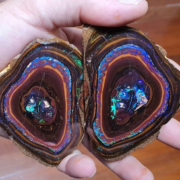
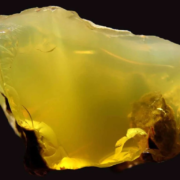
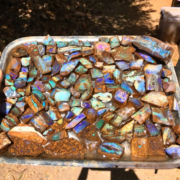
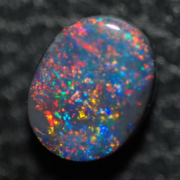
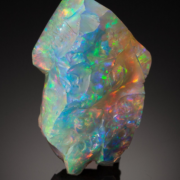
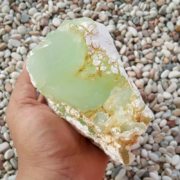


Leave a Reply
Want to join the discussion?Feel free to contribute!